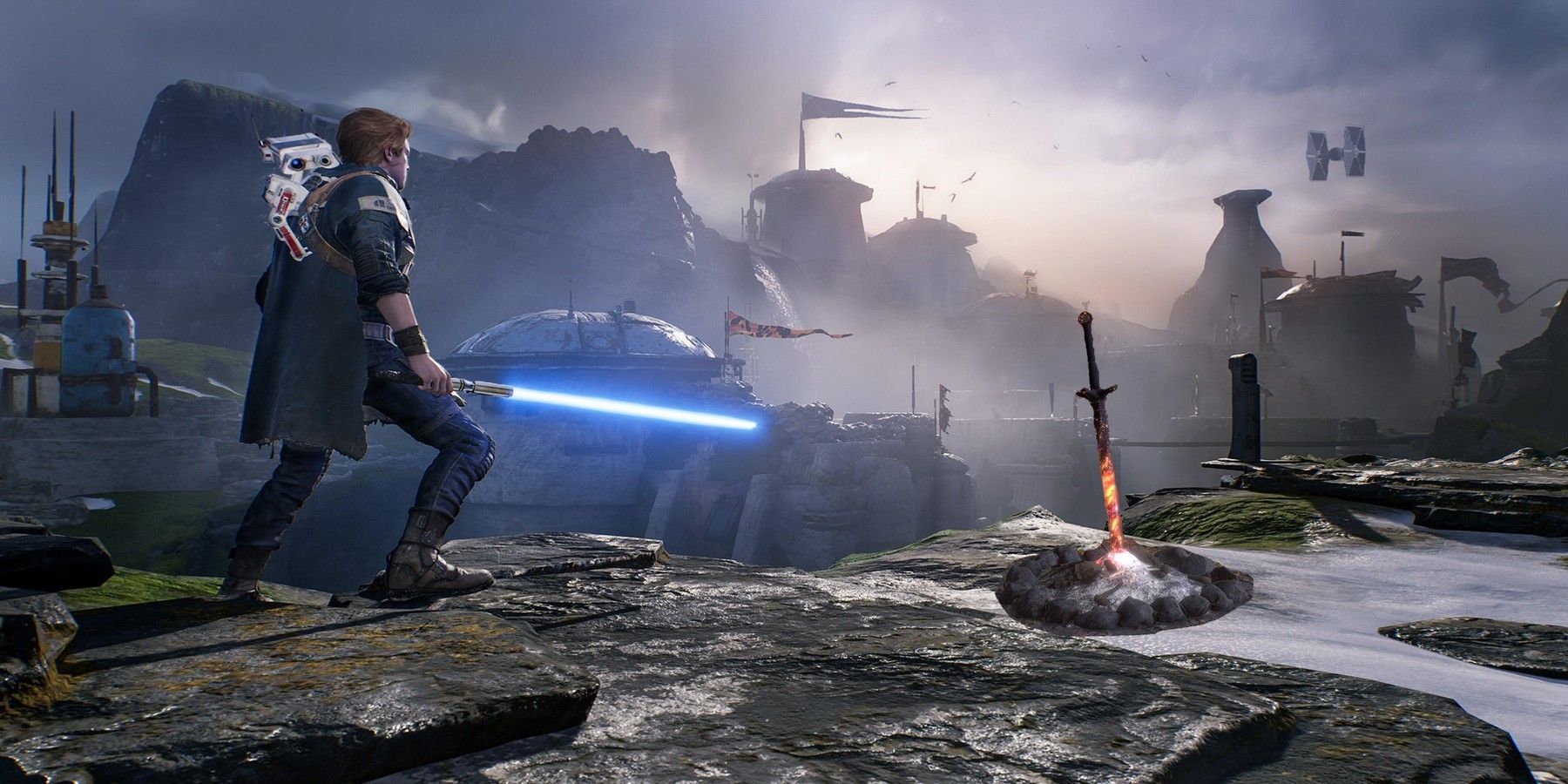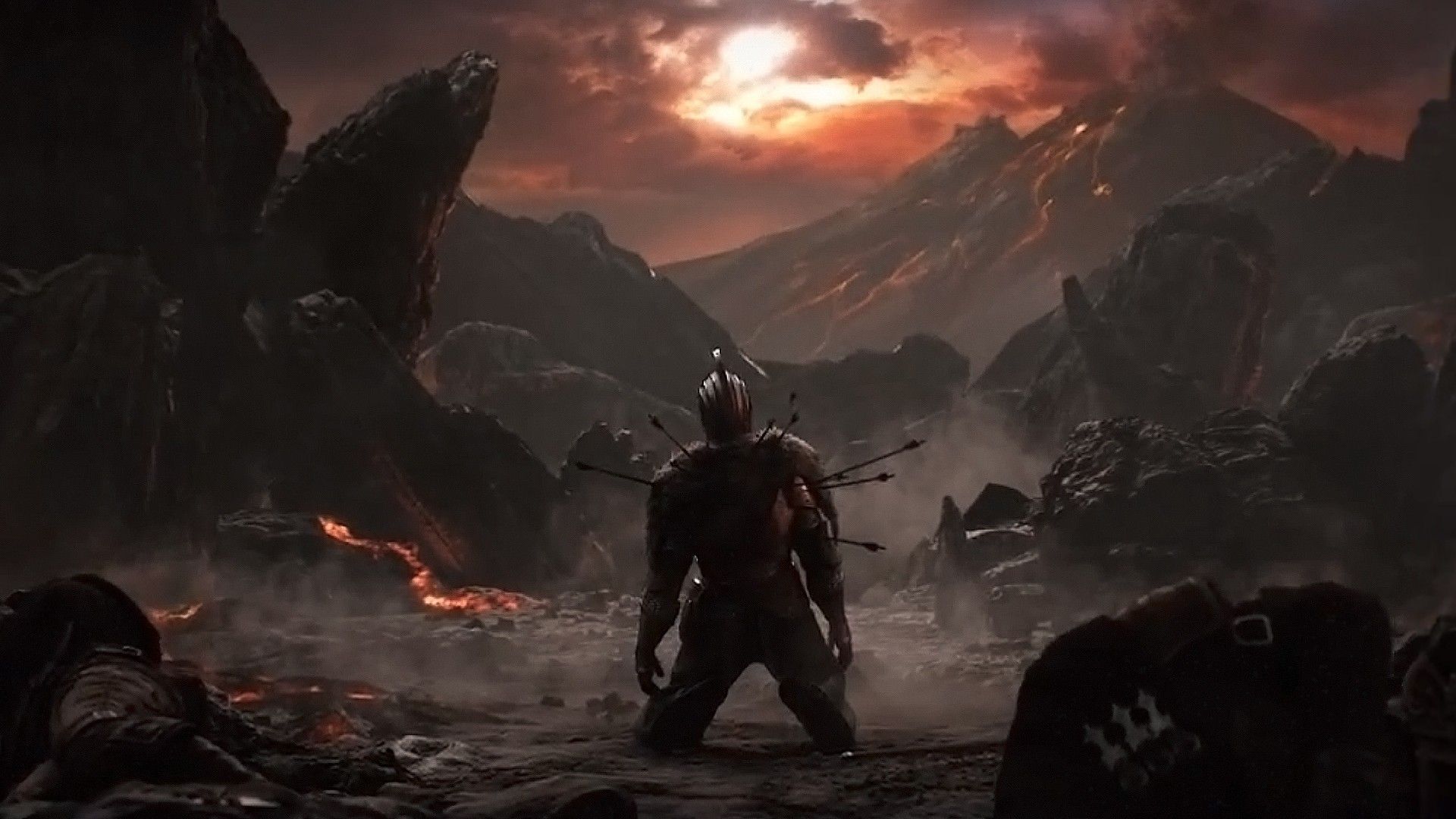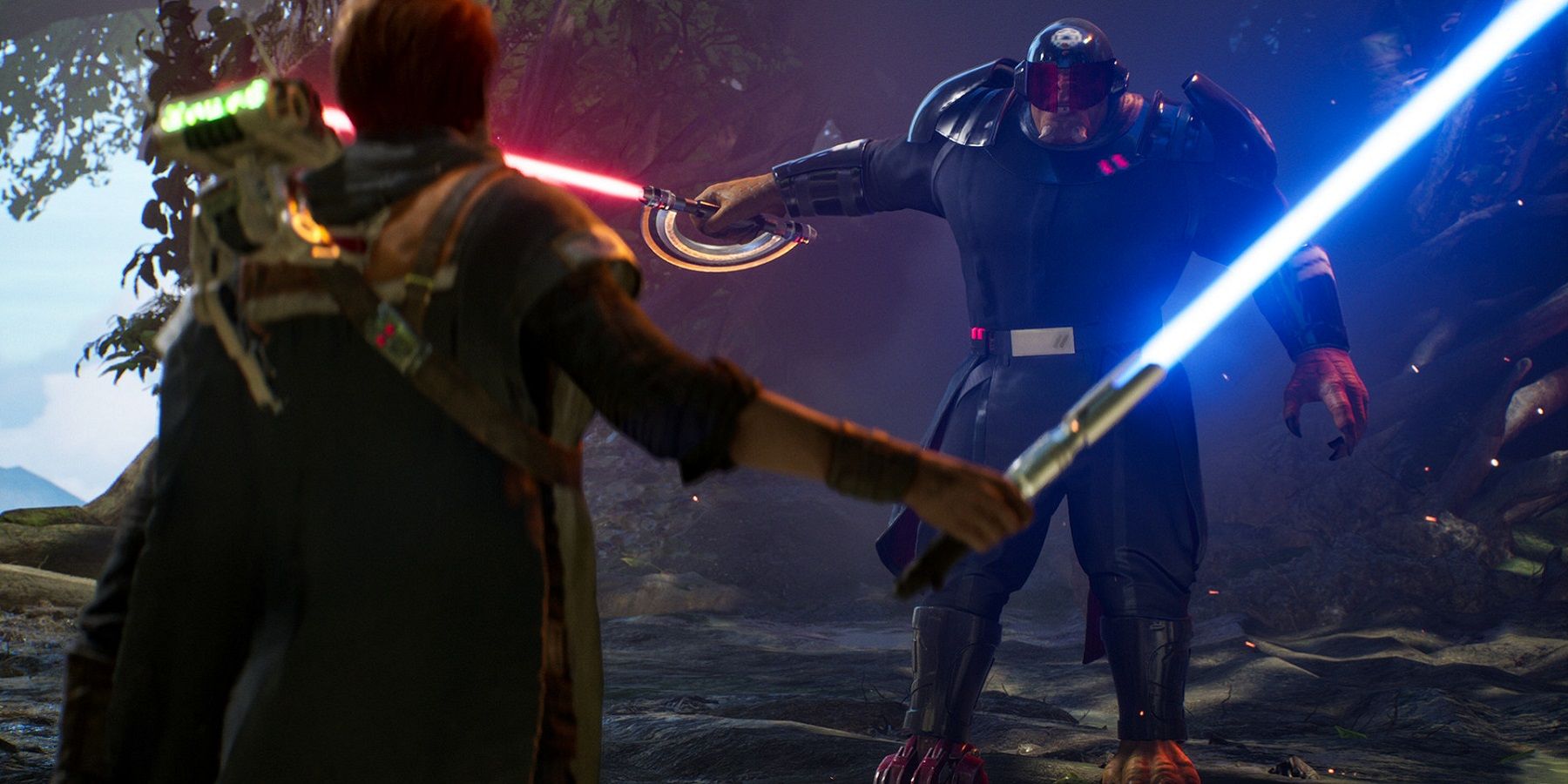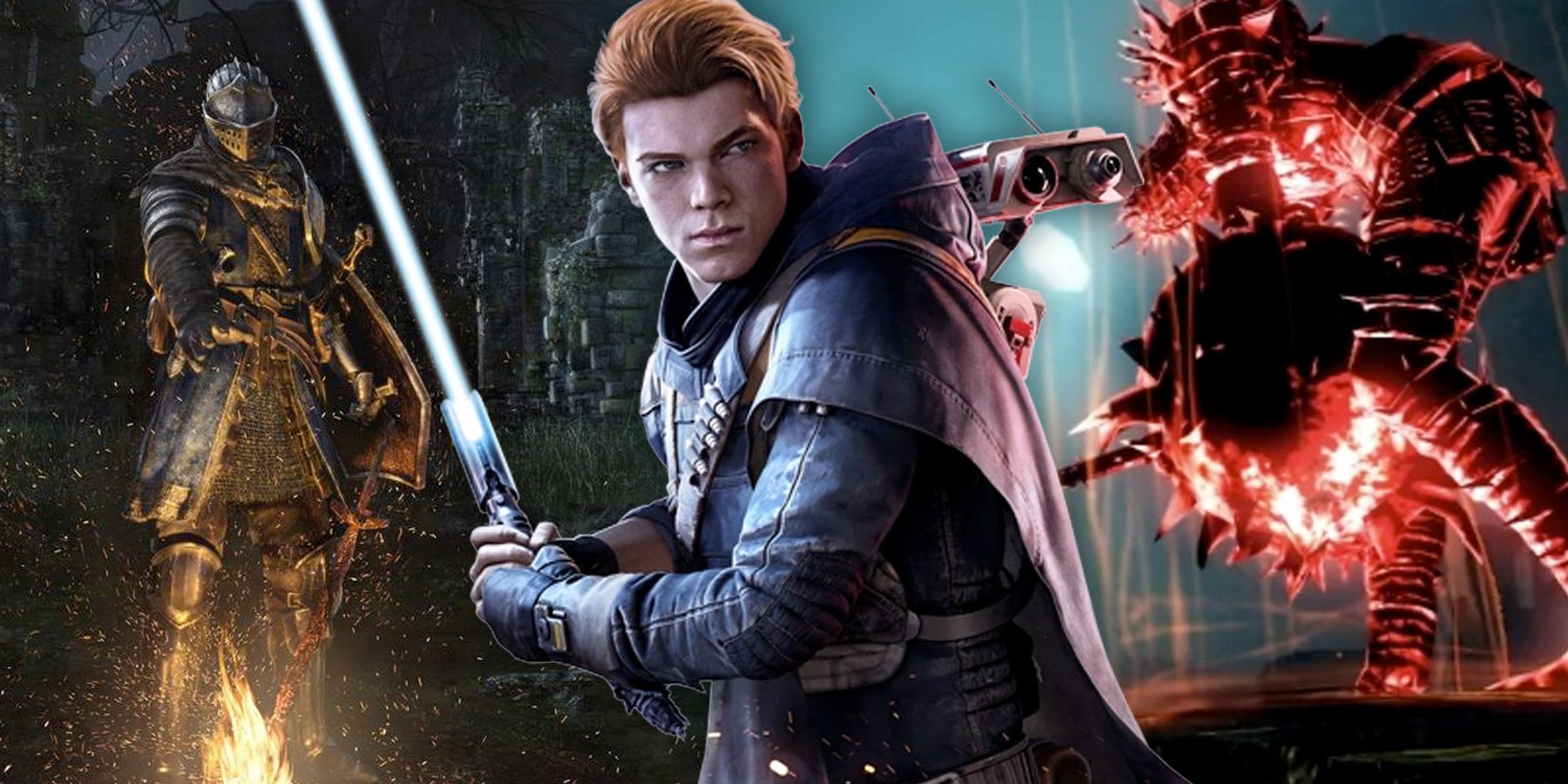FromSoftware's Souls series is a unique and iconic franchise within the annals of gaming history. It is so iconic, in fact, that it has spawned a sub-genre all on its own, with players comparing Soulslike games against their namesakes. This has led to calls from players for fan-favorite franchises to create their own version of a Souls game as well, and Star Wars Jedi: Fallen Order is no exception.
Respawn Entertainment's addition to the vast Star Wars canon was a commercial success and was well-received by players hungry for a single-player Star Wars experience. Star Wars Jedi: Fallen Order lets gamers take up a lightsaber and see off enemies with a combination of both famous and fresh Force powers and exciting new characters. Although the game was a popular release, many gamers saw it as a showcase for something else – a true Star Wars Souls game.
What Makes A Souls Game
Dark Souls games, along with FromSoftware's similar titles like Bloodborne and Sekiro: Shadows Die Twice, famously feature punishing combat and harsh consequences for player death. They also include some kind of element that is gained from taking out enemies that is integral to player progression and is usually lost when a player dies, and checkpoints that reset the world and respawn fallen enemies. In addition to this standard checklist, Soulslike games usually push players to learn enemy patterns and approach combat methodically rather than going through a game mashing buttons at every enemy type. In fact, the challenging combat and frequency of a death screen are probably the most well-known of Souls tropes.
Many Soulslike games also have vast in-game worlds where the storytelling is mainly limited to item descriptions and incidental environmental elements, rather than a narrative approach with more hand-holding. This slightly obtuse method has been criticized by some as a way for the vast majority of players to miss out on key story details, but it also encourages gamers to delve fully into the world and explore and engage as much as possible. FromSoftware is reportedly moving away from this tactic, however, in its upcoming release Elden Ring.
The use of back-tracking through various levels – sometimes multiple times – to fully unlock everything as the player levels up is also usually a common feature. Through complex gameplay, expansive narratives, and challenging combat, Souls games are usually only fit for the more masochistic of players, but once gamers understand the rhythms of combat that the game wants them to learn, they can then open up to become so much more.
How Star Wars Jedi: Fallen Order Compares
Star Wars Jedi: Fallen Order is a third-person action-adventure game that follows Jedi Padawan Cal Kestis as he attempts to evade the Galactic Empire and their deadly Order 66 that aims to eradicate all Jedi. The game takes place five years after the events of Star Wars: Episode III – Revenge of the Sith, and adds formidable enemies like Second Sister and Ninth Sister (members of the Imperial Inquisitors program) as well as already established characters like Partisan leader Saw Gerrera and the most famous Sith Lord, Darth Vader.
The game already ticks a few of the classic Souls boxes. It has challenging combat that forces players to read the patterns of enemies and adapt their technique to deal with the different enemy types. Even though it's tempting to go in full-tilt with a hack-and-slash approach, this rarely yields good results. Positioning Cal is essential to successfully taking out enemies, and ensuring that he doesn't get surrounded is important. With plenty of ranged-enemy types and stratified levels of enemy placement within some areas, players have to be strategic with where they are and how they're going about taking antagonists out.
Like many Souls games, the combat system is brimming with depth and complexity. But unlike most Souls games, there aren't a multitude of weapons for gamers to swap between and learn how to use. Cal just has a lightsaber, which can have its appearance customized but not much else. However, there are plenty of powers and abilities that the player will have to learn to take out the range of enemies. Like in Souls games, blocking and parrying is key, and players have to master these techniques to keep from meeting an untimely end again and again. Like Bloodborne, players can stun enemies and then take them out while they're temporarily vulnerable, and getting to grips with these methods and mastering Cal's combinations of quick and heavy attacks with his Force powers makes the game a whole lot easier.
Why A Star Wars Souls Game Makes Sense
It's undeniable that Jedi: Fallen Order has a lot of similarities to games in the Souls franchise, and many gamers that have wanted to see this go a step further point to the game as a proof of concept that it could be successful. The points of comparison and elements that the game had in common with other Souls titles served as a gateway for gamers to get into Soulslike games, especially if they had been put off by the seemingly impossible combat. Having a Soulslike in a comfortingly familiar and more universal franchise like Star Wars was an access point for gamers, and proved that games that fit into this sub-genre weren't as relentlessly hard as they might have assumed.
Jedi: Fallen Order showed that reskinning some of the classic elements of a Souls game so that they fit into the world of Star Wars was not only possible, but actually fairly seamless. In place of the series staple bonfire or lantern, the game had mediation points that allowed players to save, upgrade, and heal. As an extremely meditative and largely restful religion, this inclusion did not feel out of place for someone who was a practicing Jedi. Just like with other Souls games, dying forces the player back to their last meditation point and they lose all of their Life, Force, and XP, with the only way to recover them being to track down the enemy that killed them. This mechanic slots neatly into the game, and is aligned with concepts of energy exchange through the Force.
Previous Souls games have pulled from existing mythologies and religions to help inspire the in-game lore and worldbuilding, like Demon Souls, which borrowed from Christianity for some of its themes and storytelling elements. Star Wars, first and foremost, is a story about religion. George Lucas has stated that he openly borrowed from real-world religions like Christianity, Islam, and Judaism when creating the sprawling universe and its complex mythologies. Souls games are known for creating branching and beautiful stories with extensive lore and engaging mythologies, and Star Wars already has an impressive canon and established lore to pull from. The lore would easily transition to a Souls-style version of worldbuilding and storytelling, with layer upon layer of narrative hidden within environments and objects.
By increasing these Souls-adjacent aspects, a Star Wars game that followed these patterns could be something truly interesting. The most successful Soulslikes learn from and are inspired by the Souls games, and do not merely copy and paste their format. Jedi: Fallen Order has shown that the franchise is certainly capable of this, and developers could even push the envelope further to create a truly unfiltered, Souls-inspired Star Wars experience that would please fans of both franchises.
Star Wars Jedi: Fallen Order is available now on PC, PlayStation 4, Playstation 5, Stadia, Xbox One, and Xbox Series X/S.




